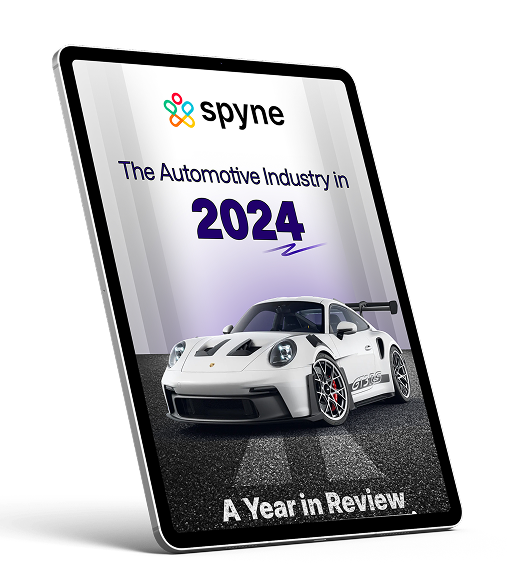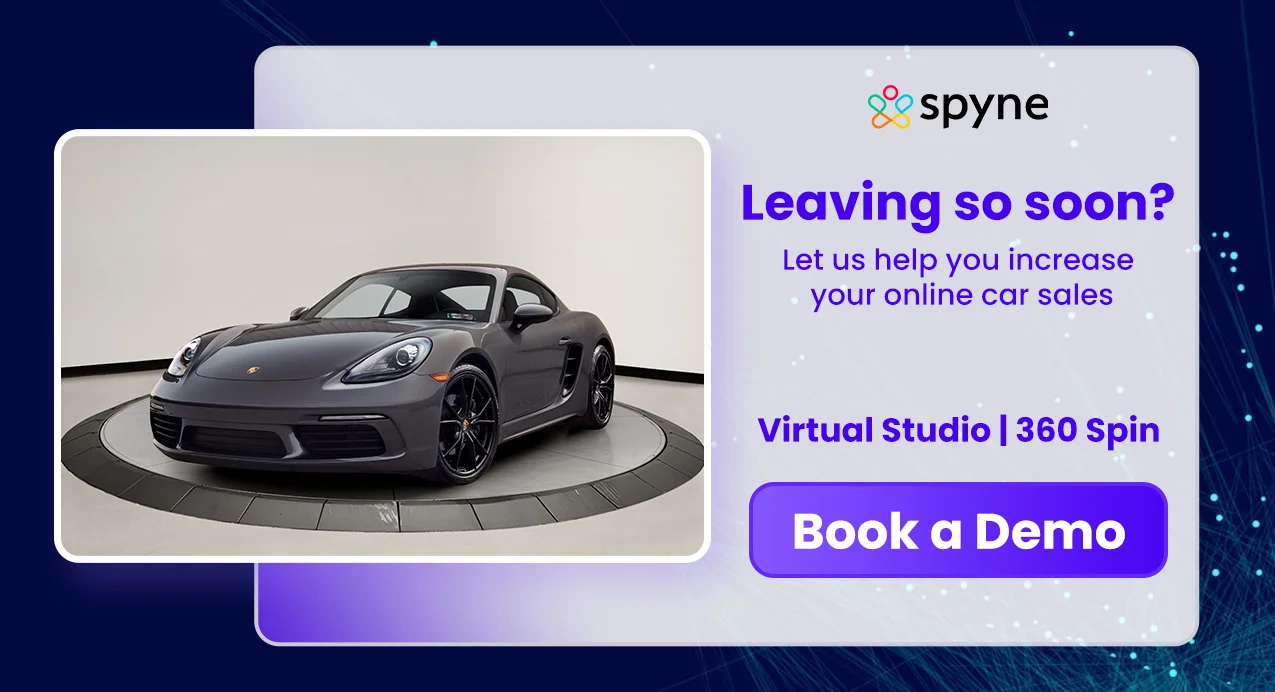Before we get into what automobile classification is and how we integrate it in the workflow, ask yourself this simple question: when consumers want to purchase a vehicle, what is the first step they take? Back in the day, they would visit various showrooms to check out different cars. From features to technology, everything would be inspected before making any decision. But that’s not the case anymore. In modern times, car research is performed on the internet. Over 90% of car shoppers conduct online research before visiting showrooms. As a dealership, how can you ensure your product shows up during their search process? In addition to posting high-quality visuals and videos, you also need to focus on automobile classification.
This small step ensures your online inventory is easily filterable and browsable. Making it easier for customers to find what they want. In this blog, we will dive deep into car classification tips for auto dealerships. Read on to know all about it.
What is Automobile Classification?
Automobile classification is a form of product classification. In layman’s terms, product classification is how a marketplace groups products into distinct categories. Think of it like sorting different types of fruits. You might group them by type (apples, bananas, oranges) or by size (small, medium, large).
In vehicle classification, the same process is followed, but on automobiles. So, different vehicles are grouped in categories based on their characteristics. It can be based on body style, size, price, fuel type, or purpose. Here are some car dealership marketing strategies on how you can classify automobiles to boost sales:
- A-segment (Mini): This category includes the smallest cars, also called city cars or microcars. They’re fuel-efficient and compact, perfect for urban landscapes.
- B-segment (Small): These are slightly bigger cars, lying somewhere between A-segment and the B-segment in size. The key is that they offer more space and features while still being ideal for cities.
- C-segment (Medium): These are mid-sized automobiles with an ideal balance of features and size. Often popular among families and commuters, they are the ultimate mix of comfort with efficiency.
- D-segment (Large): Bigger SUVs fall in this category. They offer ample space and comfort, making them suitable for big families.
- E-segment (Executive): Think SUVs with a luxurious interior and extravagant features. Those are the kinds of cars you find in this category. They boast space, luxurious traits, and advanced technology. All this while being full-size.
- F-segment (Super Luxury): Sports cars and high-end luxury automobiles fall in this category. They offer advanced technologies, great performance, best materials, along with a focus on comfort.
Why Classification Matters in Auto Merchandising
Why do we need to group into various vehicle types and categories? The key reason behind this is product discoverability. Imagine you just post car catalog without adding any specific tags. It would be so problematic for viewers and even search engines to find a specific automobile. But with the right classification, this process becomes way easier. Let’s look at some advantages of the classification of cars:
Elevates Customer Experience
Accurate car classification types make searching and filtering easier for viewers. They can refine their search based on specific preferences. Instead of sifting through listings, they can quickly narrow down their options. Consequently, car merchandising platforms can offer relevant recommendations based on their past searches.
Correctly classified listings also ensure the information provided in each vehicle type is consistent and organized. Such that shoppers can compare vehicles within categories and understand features. Overall, enabling a more personalized experience for every viewer.
Unlocks Category Specific Attributes
To really level things up, dealerships can perform best car classification on a granular level. This means you determine specific automobile attributes to include in listings. Such as body type, make, model, fuel type, drivetrain, condition, and price range. Doing so helps platforms offer category-specific filters for browsing.
Automobile classification also enables better side-by-side comparison. It highlights key differences in specific attributes for viewers to investigate.
Aids in Marketing Campaigns
Better car classifications provide more detailed customer data, in turn allowing the creation of highly targeted marketing campaigns. You can segment audiences based on the types of automobiles and create tailored ads accordingly.
This also helps send out personalised emails. You can share information about the cars their interested in. Thus, leading to better engagement rates and likelihood of conversions.
Content creation is also affected by vehicle classifications. Blog posts, videos, and social media updates can be made for specific categories to attract the right audience. Furthermore, SEO optimisation with relevant keywords can make it easier to find listings organically.
Improves Inventory Management
Knowing the category of products present in your inventory makes it easier to keep track. You get a clear overview of the number of vehicles in each category, make, model, and trim. This helps better forecast future demands and make adjustments. Thus, it prevents overstocks or stockouts at any given time.
Accordingly, you can optimise lot management. Making it easier for the staff to locate the specific model for customers. The ordering process also gets streamlined. This is because you can specify your needs and receive the right mix of vehicle types and categories.
Enhanced Operations
All this adds structure to the overall operation process. Such that you can easily organise and manage the vast amounts of data related to listings like specifications, pricing, and availability. Dealerships can also generate insightful reports on sales trends, popular categories, and customer preferences from it. Leading to better, more informed business decisions.
Furthermore, proper classification of data ensures simple integrations with other systems. So that you can make the most of it without any changes in the workflow.
Spyne’s Visual Tagging & AI Classification System
Accurate and comprehensive automobile classification isn’t just a passing trend. It is a necessity in today’s times. Especially as more and more shoppers turn to online platforms for research. The only way to grab attention and hook them in for longer is through effective vehicle merchandising. It also elevates their overall experience, improves efficiency, and drives sales.
Spyne is your go-to partner to achieve this. Here you can find an AI-integrated visual tagging and classification system. It detects and categorises every automobile based on the aforementioned attributes. Let’s explore all the functions it can perform:
- Car Classifier: The car object detection system verifies whether the element in the image is an automobile or not. Then it is grouped according to the vehicle types and categories.
- Car Type Classifier: Spyne has a classification chart of different automobiles, including sedan, hatchback, SUV, and pickup truck. This feature allows it to categorise your vehicle accordingly.
- Number Plate Detection and Extraction: In number plate recognition, the API can detect and extract digits on a number plate. You can also edit it to fit dealership branding.
- Car Part Detection: Every part of the car is a feature in its own right. Spyne’s AI detects those parts and tags them.
- Car Key Point Detection: Key points on the car should never be missed. When using Spyne, AI ensures this. It automatically detects and tags each important point.
- Exterior Shot Extraction: API will automatically capture and extract exterior focus shots of the automobile from a bundle of images.
- Interior Sub-Classes Classifier: Interior features like the odometer, dashboards, steering wheel, seats, and infotainment systems are crucial elements. Spyne automatically detects and tags them.
- Tint Classifier: In case of old or second-hand cars, it can detect whether the car windows are tinted or not.
- Dent and Damage Detection: Car damage assessment can be easily done using Spyne.
- Tire Detection: Tires are accurately identified and tagged for customer understanding.
- Mirror Classifier: It detects rear-view mirrors in the car images and tags them accordingly.
Spyne’s Approach to Standardization
While automobile classification is crucial, having consistent listings is paramount for a multitude of reasons. So much so that it significantly impacts both the buyer’s experience and the seller’s success. This is why at Spyne, we try to ensure standardization along all vertices. Here are some aspects to ensure this:
Quality Control Automation
Spyne employs AI-powered systems to analyse uploaded and captured images against predefined quality standards. These checks for various issues such as sharpness, focus, lighting, exposure, composition, framing, completeness, and much more. In turn, providing real-time feedback and rejecting images that fail to meet the standards.
Optimized Image Capture
Dealerships can find standardised guidelines for capturing vehicle images. This includes defining specific camera angles, lighting recommendations, distance and framing guidelines, and equipment recommendations. It also provides predefined templates or camera presets to apply.
Brand-Specific Styling
Spyne offers endless customisation options to create and implement brand-specific styling. You can tweak backgrounds, watermarks, logos, colour grading, composition, and layouts. Animated graphics and interaction elements can also be added to further boost viewer engagement.
Image Enhancement
Visual appeal and consistency go hand in hand. If the graphics are not appealing to the human eye, being consistent is of no use. Spyne ensures that you can focus on both in the same time. Car Image enhancer adjusts brightness, colour, shadow, perspective, and highlights. In case of automobile videos, background noise is reduced and details are sharpened.
Proprietary Data and Annotation
Sypne collects and analyses data related to the performance of different types of automobiles. This allows you to understand customer behaviours and refine images accordingly. Custom annotations can also be employed to accurately label various features.
Future of Automobile Classification at Spyne
Automobile classification is a foundational element of Spyne’s technology. In the future, we aim to improve this by focusing on deeper integrations, enhanced capabilities, and expansion into the comprehensive retail suite. The broader system we aim to focus on includes:
Digitisation and Inventory Management
Accurate vehicle classification further escalated inventory management, precise car listings, and pricing suggestions. Spyne aims to leverage this data to analyse market trends for convenient stock optimisation.
Damage Detection & Condition Reporting
When it comes to used or second-hand cars, being transparent is key. No one wants to buy a car that turns out to be damaged later on. Spyne utilizes visual AI to avoid such problems. It automatically inspects and detects damage on every vehicle. While also classifying the type and severity of damage. Moving forward, this feature will become more sophisticated.
Feature Recognition
Sharing vehicle details and specific features can be a game-changer for automobile dealerships. Spyne’s AI algorithms are designed such that they identify key features for highlighting in marketing materials. Potentially, it can also extract more granular inventory data. Automotive classification also gives way to automated image tagging based on make, model, colour, and features.
Personalisation
Spyne offers endless customisation options to dealerships. Be it setting backgrounds, adjusting colours, or even switching audio, they can enjoy it all. This allows you to create personalized content for your audience. In turn, this boosts the customer’s experience and builds trust.
Integration with LLMs
Automobile classification details are often used by large language models to generate descriptions. This powers AI chatbots to clear customer inquiries and enable smarter search functionalities.
Wrapping Up
In conclusion, automobile classification is a must for every dealership. It divides and groups vehicles based on their attributes. In turn, viewers can easily search and find the model they’re looking for. Furthermore, getting granular with vehicle classification can enhance data collection and offer category-specific filters.
But performing car classifications all by yourself can be a tedious task. This is where Spyne comes in. Here you just need to upload the images, and its powerful AI automatically detects and adds tags. So why wait? Try it out now!

























